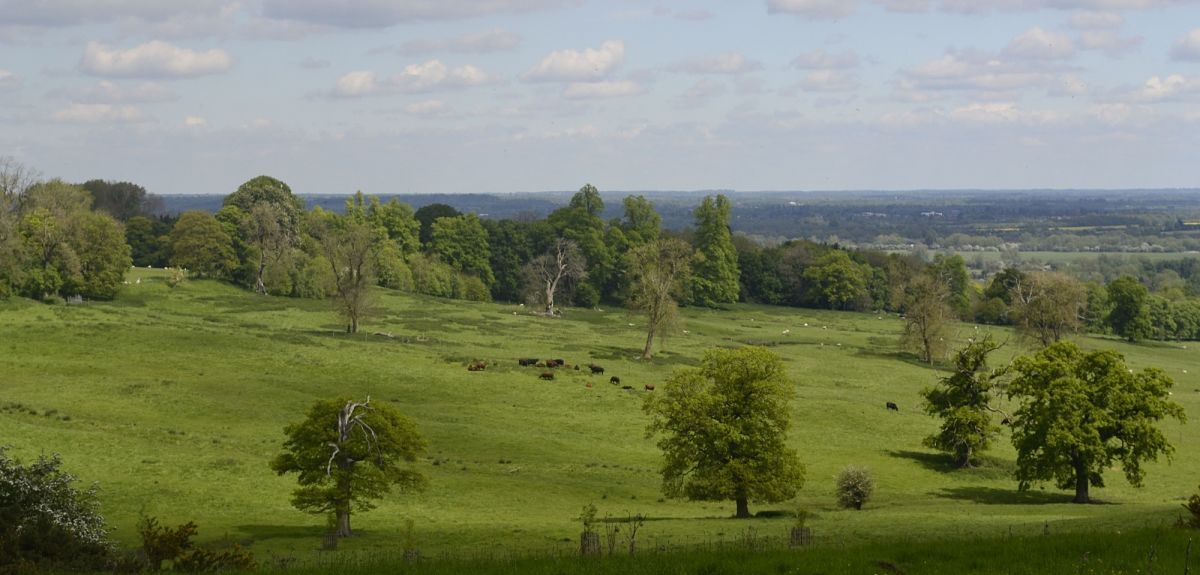
Copyright © Oxford University Images / Elizabeth Lettmann - All rights reserved.
Woodland concerns put into historical context
Given the time it takes for trees to grow, woodland researchers need to take a long view. A new book from Oxford University’s Keith Kirby and Nottingham University’s Charles Watkins certainly does that, covering 10,000 years of changing forest landscapes in Europe. In looking at the spread of trees after the last ice age to the effects of more recent wars and industrial demands they draw out important lessons for the future.
The book, Europe’s changing woods and forests: from wildwood to managed landscapes, is based on a wealth of new research in the last few decades from experts across Europe. This has varied from looking at DNA patterns to studying historical archives and even art.
Keith Kirby said: ‘Woods have military and economic significance so they are found even on very early maps. Research has also looked at old photos and paintings. Allowing for artistic license, if a landscape painting shows a terraced hillside and that hillside is now heavily wooded, you know something has changed.’
The DNA research has improved understanding of how plants spread after the end of the last ice age. Keith Kirby explained:
‘It was believed that as the ice increased, species were pushed back and then spread back as the ice retreated. DNA analysis shows where they came back from, the routes they took and how fast they spread.
‘Plant species seem to have spread back after the ice age faster than they spread now. This is sometimes used to suggest that plant life will be able to cope with climate change. However, it may have been that pockets within the area of ice where some species could hold on. That could explain how they appeared to spread so quickly, but it could also suggest that these species may not be able to cope with future climate change after all.’
The book also shows how woodland cover has been affected by historical and economic demands. For example, the demand for Chestnut poles from Kent’s hop growing industry saw woodland in the county turned over to Chestnut, while elsewhere in the South Hazel was encouraged to provide the raw material for sheep hurdles. Wars can lead to major felling – in the Second World War, between one third and one half of broad-leaved woodland had ongoing felling.
Keith Kirby explained: ‘Woods are kept when profitable. So the most agricultural counties, for example Cambridgeshire and Norfolk, are the least wooded. In Cumbria the iron industry needed charcoal so Oak forests were maintained to supply the iron masters. Sometimes the naturally occurring trees were encouraged to spread, while in other cases there was deliberate planting.’
From the history, the authors move on to look at the prospects for today’s woodland. Among the good news:
- our woodland cover is increasing and more of it is protected;
- the fashion for large-scale clear-fells is being replaced, reducing the disturbance to the forests and their wildlife;
- traditional forms of woodland management found in wood-pastures and coppices are increasingly recognised as important for biodiversity but also as having a place in the modern world;
- keystone species such as the wolf and beaver have spread back through Europe through natural recolonization and re-introductions.
However there are serious challenges ahead, some familiar, some taking new forms:
- woods and individual old trees are still cleared for development or at risk from pollution;
- new woods will take many decades, in some cases centuries before they are colonised by ancient woodland plants such as herb paris;
- across Europe deer populations threaten tree regeneration and change the nature of the ground vegetation;
- more and more tree species are threatened by pests and diseases, for example Ash Dieback;
- climate change raises questions as to what species will be able to survive in our forests in future.
Keith Kirby believes that the long view enables us to prepare for the future: ‘We must first understand the past. We cannot ignore the impact that our ancestors have had on our forests and wooded landscapes. This is as true for the great ‘primeval’ forest of Bialowieza in Poland as it is more obviously for the spruce plantations created in Britain and Ireland, or places such as Wytham Woods in Oxfordshire and Sherwood Forest in Nottinghamshire. Rather we must recognise those effects and choose how we can carry forward the best of the past into what is inevitably a somewhat uncertain future.’
 New Year Honours 2026
New Year Honours 2026
 New study estimates NHS England spends 3% of its primary and secondary care budget on the health impacts of temperature
New study estimates NHS England spends 3% of its primary and secondary care budget on the health impacts of temperature
 International collaboration launches largest-ever therapeutics trial for patients hospitalised with dengue
International collaboration launches largest-ever therapeutics trial for patients hospitalised with dengue
 Oxford-built multi-agent assistant for cancer care to be piloted in collaboration with Microsoft
Oxford-built multi-agent assistant for cancer care to be piloted in collaboration with Microsoft